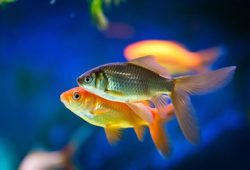Care and Breeding of Loaches
The article gives an analysis of Care and Breeding of Loaches.

Contents
A Bottom Dweller Fish for Your Freshwater Aquarium
Loach Characteristics
Loaches belong to the Cypriniformes order and the Cobitidae family. Most loaches have elongated bodies and an overshot mouth. Through evolution, the overshot mouth enabled the loach to be a bottom feeder and allows it to burrow through the substrate of your tank. Most loaches have a spine which is called an erectile spine located just below the eyes. These spines are razor sharp and can easily cut your fingers. Whenever handling loaches, take great care because these spines can do a lot of damage.
Loaches and some types of armored catfish have developed suction cups which enable them to hold on to rocks and plants in a strong current and not get swept away. While using these suction cups, they are not using a lot of energy. Like catfish, loaches have sensory organs called barbels.
Loach Care in an Aquarium
When taking care of loaches in the aquarium, the number one thing to remember is to provide lots of hiding places. Loaches are nocturnal and hide during the day and come out at dusk or at night. Hiding places are a must, even if it’s just one piece of drift wood. Heavily planted areas can also provide hiding places. Caves built out of rock are inexpensive and easy to maintain.
Because loaches like to burrow in aquarium substrate, use fine gravel or sand in order that the loaches don’t hurt their mouths.
Most loaches are affected quickly by build-ups of toxins in the water so water changes and good filtration is a must. All loach species seem to like slightly acid water with a PH of 6 to 7.5 and even 8 can be good for Clown Loaches. They also like medium to hard water in the aquarium.
Loach Compatibility
All species of the loach family can be combined with any middle or top level fish but should not be combined with other bottom dwellers such as catfish. This will cause aggression and injury in your tank. Most species of loaches can be kept in small groups but there are some loaches where one per tank is recommended because they can get territorial. Do your research on loach compatibility before purchasing. A knowledgeable local retailer should be able to help you.
Breeding Loaches
To date, most breeding of loaches in captivity has occurred by chance and not planned. PH, water conditions and food would play a part in breeding, but it will mainly be trial and error. If you decide to try to breed loaches, you should have a note book and pen and keep track of every detail such as food, water temperature and so on. Other hobbyists would welcome your knowledge.
The most popular selling loaches are Clown, Kuhli, Hillstream, Yoyo, Skunk, Dwarf, Zebra, Weather, Blue Botia.



